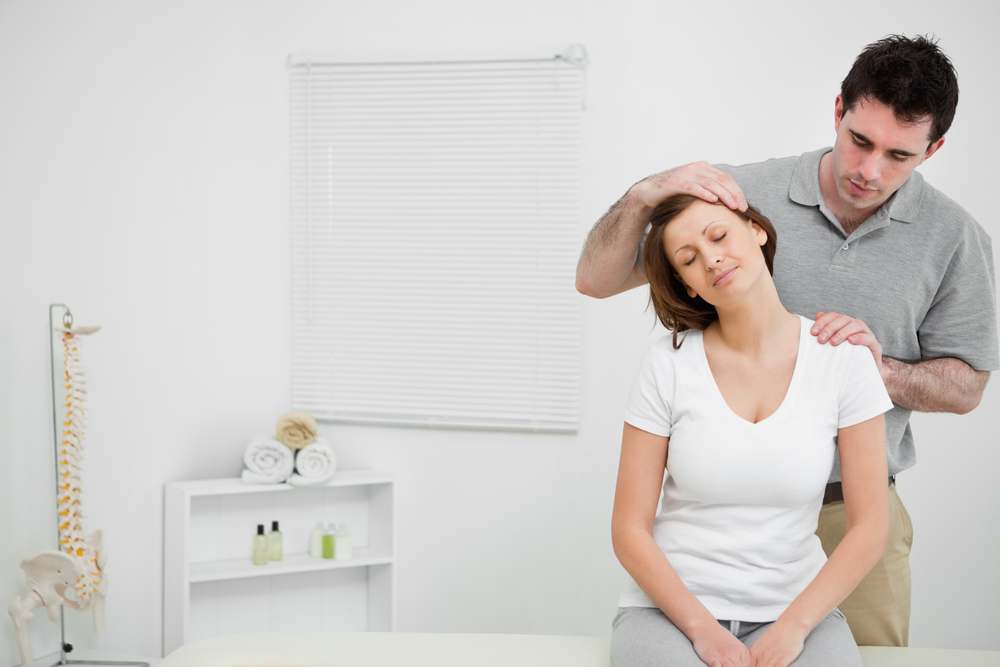Neck, arm and hand pain: Cervical nerve root syndrome
Do you have neck pain that moves down the arm to the hand? One possible cause of these symptoms is when the nerve tissue gets compressed as it comes out of the spine at the neck. ‘C
ervical nerve root syndrome’ is this condition’s name. It can be a little complicated to explain, so we’ve broken it down for you, but if you have any questions, please just call us at
Bayside Chiropractic, and we’d be happy to chat more!
Anatomy
The section of the spine that runs through the neck is known as the ‘
cervical’ spine (pronounced
ser-vy-call). The cervical spine is made up of seven vertebrae (i.e. bones). These stack on top of each other in a slightly inwards curving column, when looked at from the side. The vertebrae are separated from each other by a disc and are connected to each other by small joints that run down the back part of the spine.
The shape of the vertebrae as they stack on top of each other create small holes on the side, which nerves pass through on their way from the spinal cord to the arm (and vice versa). The points where the nerves pass through the holes are known as ‘nerve roots’ and it is at this location that they are susceptible to compression from other body parts. If compression occurs here, leading to symptoms, we have a case of cervical nerve root syndrome!
Causes
The main causes of a cervical nerve root syndrome include compression from:
- A herniated disc; or
- Spurs that develop on the vertebral bones
A cervical disc herniation can occur as a result of trauma to the neck, where the head and neck are forced into a forward bend (think of a whiplash injury during a car accident), or as a result of long-term postural strain (desk workers for example!). When the disc herniates, the disc material presses on the nerve root tissue as it passes by.
Bone spurs tend to develop from ageing and degeneration. Long-standing forces acting on the bone of the vertebrae can lead to growth of ‘extra’ bone pieces. These are bone spurs and are also known as ‘
osteophytes’. These can develop around the rim of the holes where the nerves pass through, which over time can compress on the nerve root.
Signs and symptoms
The symptoms of cervical nerve root compression vary depending on where the affected nerve root lives in the spine. Nerve roots exit the spinal cord where two vertebrae join and travel from the neck to the shoulder and down the arm as nerves. These nerves provide the muscles with electrical stimulation (and movement) and the skin with sensation, as well as other functions. Now earlier, we spoke about discs. Due to the curve of the spine in the neck, the lower discs and vertebrae in your cervical spine tend to be affected more than the higher-level discs and vertebrae. The degeneration from postural strain usually effect these lower cervical discs more severely. This is why they are the most diagnosed nerve root syndromes.
Symptoms may include any or all of the following:
- Neck pain
- Radiating upper limb pain (this may include shoulder, arm, forearm or hand pain)
- Numbness
- Pins and needles
- Neck, shoulder and arm movement dysfunctions
- Weakness of the upper limb, including grip weakness of the hand
Treatment
The initial stages of a nerve root syndrome can be very painful. When nerve tissue gets compressed, the initial response from the body is inflammation. Inflammation produces swelling and pain, and there is usually a period of 3-4 days when the pain is particularly bad. It is a good idea to see your chiro early on, so we can provide you with advice on how to manage the first stages of injury.
We can also provide you with traction treatment which helps to decompress the nerve. Our hands-on treatment will be minimal early on, because the body needs time to adjust to the injury and you need time for the inflammation to reduce. Because the pain is initially quite severe, many people end up consulting their doctor. And pain medications are often prescribed to help them feel more comfortable. At this time, you may also be referred for CT or MRI imaging to confirm the diagnosis and aid with the treatment plan.
As the initial stages pass and the pain lessens, more rigorous treatment can start to be carried out. We prefer non-surgical treatment options with cervical nerve root syndromes. This is where our expertise in hands-on treatment comes into play. We will use a combination of soft tissue massage, and joint mobilisation and manipulation, combined with flexibility and strengthening exercises. This helps to restore full movement back to the neck and upper limb regions.
The effects of a disc herniation can last anywhere from 3-6 months, depending on the severity. If your nerve root syndrome is caused by a bony spur compression, we may need the opinion of a spine specialist. The effects of large spurs are unlikely to respond to hands-on treatment alone. Therefore, severe cases may need surgical intervention to fully decompress the nerve tissue and reduce the risk of long-term damage to the nerve.
Getting help
There is good news though! Most cases of nerve root syndrome respond well to non-surgical treatment options and most people make a full recovery and can return to doing the work and leisure activities they love to do. If you have neck pain, please book an appointment with us today, so we can get you sorted pronto. Call now on (02) 9523 9940.

